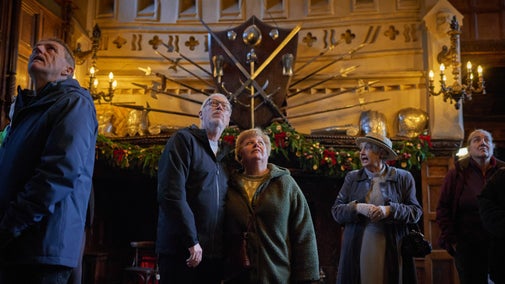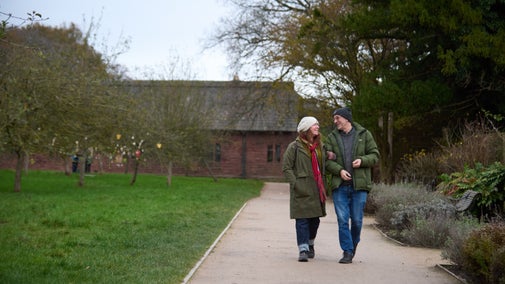
Speke Hall's collections
Explore the objects and works of art we care for at Speke Hall on the National Trust Collections website.

Ever wondered why the house at Speke Hall closes over winter? It's the perfect time of year for giving our 26 historic show rooms, nine collection stores, archive, two cellars and 6,000 objects the care and attention they deserve. Read on to find out more about the important work that the team are doing to preserve these special areas of Speke Hall.
The house closes every winter so we can give every inch of this special building a careful clean. It can take over a week to clean each room, so our staff and volunteers must work carefully to ensure that the objects and collections are preserved properly in time for the house’s reopening in early spring.
We welcome thousands of visitors to explore the house for most of the year, so cleaning the carpets regularly is an important task. We look for signs of pests such as moths and beetles, whilst removing abrasive grit, as all of these can cause significant damage.
We also inspect the historic floorboards that lie underneath the carpets. If major restorative conservation work is needed, this will need to be scheduled in over the winter with specialists so it can be completed before reopening.
Every year, we undertake the huge task of giving one exterior wing of the house a facelift. This means erecting scaffolding at a significant cost. We then inspect the Tudor wattle and daub walls for signs of deterioration and re-paint them with specialist paint to keep the house safe from the harsh sea air coming in from the Mersey. It also gives us the chance to clean the many mullioned windows, pane by pane.
Carefully cleaning Speke Hall’s many historic curtains, tapestries and other textiles is a painstaking task. We use specially designed hoovers and muslin to remove dust and potential pests from the delicate fibres.
Pieces of muslin are useful for testing the dust levels around the house. The small squares of material are placed over a vacuum nozzle whilst cleaning furniture, catching the dust that is lifted. This can then be examined by the team. Muslin also helps to save pieces of fragile furniture which might be dislodged when being vacuumed.
A hogs-hair brush is used to clean wood and stable metals. As you move around the house, take note of how much wood is visible and how long it would take to clean with such a small brush.
A pony-hair brush is used to clean a number of items in the house, including ceramics, leather, glass, paper, soft metals and plastics.
Lint free dusters are used widely across the house in cleaning, including for dusting flat surfaces.
Gloves must be worn when handling any metals, photographic material, glass mirrors, glass chandeliers/vessels, giltwood, furniture, frames and textiles. They’re useful to protect historic pieces from damage by the oils on our hands.
With your ongoing support, we're able to continue our vital conservation work. Thank you for helping to protect these special places.

Explore the objects and works of art we care for at Speke Hall on the National Trust Collections website.
Discover the hall's fascinating objects and architectural features and learn about the Norris family’s dangerous life under Elizabethan rule.

Since Sir William Norris began building Speke Hall in 1530, its survival hasn't always been guaranteed. Discover the stories of the people who have lived at Speke Hall.

Discover how we care for the garden and estate at Speke Hall and how we’re helping wildlife including bees and butterflies to thrive.

From peaceful strolls through colourful borders, to adventures in the woodland and spotting wildlife in the secret garden, there's plenty of seasonal joy to find at Speke Hall.
